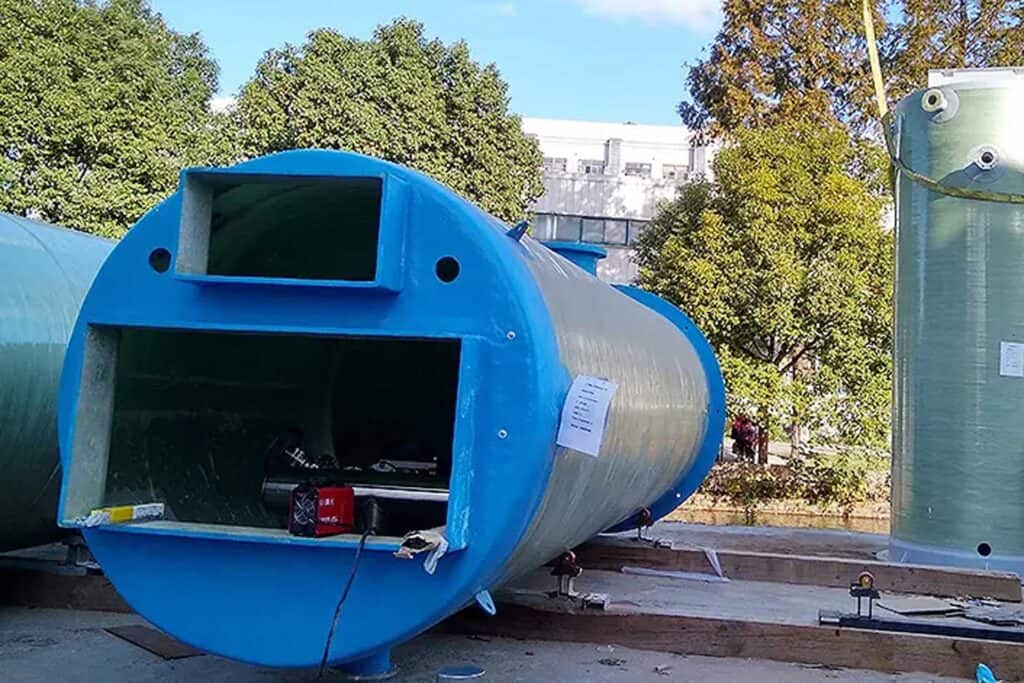Lift stations play a crucial role in effectively managing wastewater treatment systems. They help transport raw sewage and wastewater from lower to higher elevations, allowing these substances to be treated and disposed of safely. However, lift stations can face significant challenges like clogging, corrosion, and excessive wear and tear. To address these challenges, many lift stations use lobe pumps. In this article, we will explore the benefits of using lobe pumps in lift stations.
Understanding Lobe Pumps
Lobe pumps are positive displacement pumps that trap fluid between two intermeshing lobes and move it through the pump’s casing. They are commonly used in industrial and commercial applications, including lift stations. There are two types of lobe pumps: rotary lobe pumps and twin screw lobe pumps. Both types work using the same principles, but the twin screw lobe pumps have an additional screw element that helps to generate a greater flow rate and pressure.
Lobe pumps offer several advantages over other types of pumps. They are efficient, have low pulsation rates, are self-priming, and have excellent suction capabilities. Also, lobe pumps can handle fluids with high viscosities, making them ideal for lift stations dealing with solid waste wastewater.
Importance of Lobe Pumps in Lift Stations
Lift stations are an essential component of wastewater management systems. They transport sewage and wastewater from lower to higher elevations, where it can be treated and disposed of safely. However, lift stations face several challenges, including clogging, corrosion, and excessive wear and tear. These challenges can cause lift stations to fail, resulting in costly repairs and potential environmental hazards.
Lobe pumps can address many of the challenges faced by lift stations. For example, lobe pumps have a low pulsation rate, which means they can operate smoothly without causing damage to the pipes and valves that make up the lift station. Also, lobe pumps have a gentle pumping action, reducing the risk of damage to the solids in the wastewater, thus reducing the risk of clogging. Furthermore, lobe pumps have a robust design resistant to wear and tear, so they can operate for extended periods without needing maintenance or replacement.
Key Features of Lobe Pumps for Lift Stations
Efficiency is one of the critical features of lobe pumps. They can handle a wide range of fluids and operate at high flow rates, so they can quickly move large volumes of wastewater. Also, lobe pumps have a low energy consumption rate, which can help lift stations save on energy costs.
Durability is another key feature of lobe pumps. They are constructed from high-quality materials such as stainless steel, which makes them resistant to corrosion and wear and tear. Also, lobe pumps have a low maintenance requirement, meaning they can operate for long periods without needing repairs or replacement.
Versatility is also a critical feature of lobe pumps. They can be used in lift stations that deal with a wide range of fluids, including those with high viscosities. This means they can be used in different lift station applications, making them versatile for wastewater management systems.
Low noise levels are also a critical feature of lobe pumps. They operate quietly, which makes them ideal for use in areas where noise pollution is a concern, such as residential areas.
Factors to Consider When Choosing Lobe Pumps for Lift Stations
Several factors need to be considered when choosing lobe pumps for lift stations. These include:
- Flow rate: The pump’s flow rate must match the lift station’s capacity to ensure that wastewater can be transported efficiently.
- Viscosity: Lobe pumps are suitable for fluids with high viscosities. Still, the pump’s design must match the fluid’s specific viscosity to ensure optimal performance.
- Pumping pressure: The pump’s design must match the lift station’s pumping pressure requirements to ensure that wastewater can be transported efficiently.
- Material of construction: Lobe pumps are commonly constructed from ductile iron and stainless steel, but other materials can be used based on the specific requirements of the lift station.
- Power source: Lobe pumps can be powered by electricity or hydraulic systems. The power source must match the specific requirements of the lift station to ensure that the pump operates efficiently.
Applications of Lobe Pumps in Lift Stations
Lobe pumps can be used in various lift station applications, including:
- Raw sewage lift stations: Lobe pumps are suitable for transporting raw sewage containing solid waste, making them ideal for raw sewage lift stations.
- Wastewater treatment plant lift stations: Lobe pumps can be used in lift stations that transport wastewater to wastewater treatment plants.
- Industrial lift stations: Lobe pumps can be used in industrial lift stations that deal with wastewater from manufacturing processes.
- Municipal lift stations: Lobe pumps can be used in municipal lift stations that transport wastewater from homes and businesses to treatment facilities.
The advantages of Yaness rotary lobe pumps for lift stations.
Yaness rotary lobe pumps offer several advantages for lift stations. Firstly, the pump body has wear liners and plates to protect against abrasion and extend the pump’s life. The lobes are also coated with NBR and other rubber, providing excellent wear and corrosion resistance.
Rubber lobes also contribute to the pump’s durability and longevity, as they can withstand harsh operating conditions. Another benefit of Yaness rotary lobe pumps is the inclusion of an integrated gearbox, which allows them to be driven by standard-speed motors and reduces the required installation space.
These features make Yaness rotary lobe pumps an ideal choice for lift stations requiring reliable and efficient pumping solutions.
Maintenance of Lobe Pumps in Lift Stations
Routine maintenance is essential for ensuring that lobe pumps operate efficiently in lift stations. Regular inspection and cleaning of the pump’s components are necessary to ensure it remains debris and damage-free. Additionally, lobe pumps should be regularly lubricated to ensure optimal performance.
If issues arise with the lobe pump, troubleshooting steps should be taken to identify the problem’s source. Suppose the pump’s components are damaged beyond repair. In that case, they should be replaced promptly to avoid damage to other parts of the lift station.
Conclusion
In conclusion, lobe pumps are an efficient, durable, and versatile option for lift stations that deal with wastewater. They offer several benefits, including high pumping capacity, low energy consumption, low maintenance requirements, and low noise levels. Factors to consider when choosing lobe pumps for lift stations include flow rate, viscosity, pumping pressure, the material of construction, and a power source. Routine maintenance and troubleshooting are necessary to ensure lobe pumps operate efficiently and reliably.
FAQs
Q: What are lobe pumps, and how do they work in lift stations?
A: Lobe pumps are positive displacement pumps that use two or more lobes rotating in opposite directions to move fluids. In lift stations, they transport wastewater from the collection sump to the treatment plant.
Q: What are the benefits of using lobe pumps in lift stations?
A: Lobe pumps offer several benefits, including high pumping capacity, low energy consumption, low maintenance requirements, and low noise levels.
Q: What factors should be considered when choosing lobe pumps for lift stations?
A: Factors to consider when choosing lobe pumps for lift stations include flow rate, viscosity, pumping pressure, the material of construction, and a power source.
Q: What applications are lobe pumps suitable for in lift stations?
A: Lobe pumps can be used in various lift station applications, including raw sewage lift stations, wastewater treatment plant lift stations, industrial lift stations, and municipal lift stations.
Q: How should lobe pumps be maintained in lift stations?
A: Routine maintenance and troubleshooting ensure that lobe pumps operate efficiently and reliably. Regular inspection and cleaning of the pump’s components and lubrication are essential for optimal performance. If issues arise, prompt replacement of damaged parts is necessary to avoid further damage.



